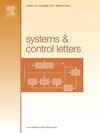CIL: Cyber security index level of cyber-physical systems: A robust stochastic game approach using MITRE ATT&CK framework
IF 2.5
3区 计算机科学
Q3 AUTOMATION & CONTROL SYSTEMS
引用次数: 0
Abstract
This paper addresses the challenge of cyber security assessment in interdependent cyber-physical systems (CPS) under model uncertainty and partial observability by developing a Hybrid Zero-Sum Multi-Stage Robust Stochastic-Bayesian (HZMRS) game model. In the cyber layer, HZMRS models attack infiltration dynamics by incorporating tactics and techniques from the ICS MITRE ATT&CK framework, thereby systematically enhancing the modeling of adversarial progression. For the power network as the physical layer, HZMRS employs the Transient Energy Function (TEF) approach, instead of linear approximations and small-signal stability criteria, to effectively capture the severe transient disturbances triggered by DoS attacks. To solve the HZMRS game, we propose a Robust Accelerated Value Iteration (RAVI) algorithm that ensures robust performance against worst-case transition probabilities and employs prioritized sweeping to accelerate convergence. We also provide a proof of convergence for this algorithm. Unlike classic algorithms, RAVI is designed to handle model uncertainties arising from zero-day vulnerabilities and incomplete information about attacker capabilities. Based on the outcome of the HZMRS, we introduce a novel metric called Cyber Security Index Level (), which quantifies the probability of successful physical layer intrusion after breaching the cyber layer. The proposed model is validated through simulations conducted on the IEEE 9-bus power network, considering an attack scenario adapted from the BlackEnergy v3 malware. Comparative results show that RAVI achieves successful convergence under uncertainty, and the derived security metrics offer improved reliability and practical relevance for real-world CPS applications.
网络物理系统的网络安全指数水平:使用MITRE攻击和ck框架的稳健随机博弈方法
本文通过建立一个混合零和多阶段鲁棒随机贝叶斯(HZMRS)博弈模型,解决了模型不确定性和部分可观测条件下相互依赖的网络物理系统(CPS)中网络安全评估的挑战。在网络层,HZMRS通过结合ICS MITRE att&ck框架的战术和技术来模拟攻击渗透动力学,从而系统地增强了对抗性进程的建模。对于作为物理层的电网,HZMRS采用瞬态能量函数(TEF)方法,而不是线性逼近和小信号稳定性准则,有效捕获DoS攻击引发的严重瞬态干扰。为了解决HZMRS博弈,我们提出了一种鲁棒加速值迭代(RAVI)算法,该算法确保了对最坏情况转移概率的鲁棒性能,并采用优先清扫来加速收敛。并给出了该算法的收敛性证明。与传统算法不同,RAVI旨在处理由零日漏洞和关于攻击者能力的不完整信息引起的模型不确定性。基于HZMRS的结果,我们引入了一种新的度量,称为网络安全指数水平(CIL),它量化了突破网络层后成功入侵物理层的概率。该模型在IEEE 9总线电网上进行了仿真验证,并考虑了BlackEnergy v3恶意软件的攻击场景。对比结果表明,RAVI在不确定性下实现了成功的收敛,推导出的安全指标为现实世界的CPS应用提供了更高的可靠性和实际相关性。
本文章由计算机程序翻译,如有差异,请以英文原文为准。
求助全文
约1分钟内获得全文
求助全文
来源期刊

Systems & Control Letters
工程技术-运筹学与管理科学
CiteScore
4.60
自引率
3.80%
发文量
144
审稿时长
6 months
期刊介绍:
Founded in 1981 by two of the pre-eminent control theorists, Roger Brockett and Jan Willems, Systems & Control Letters is one of the leading journals in the field of control theory. The aim of the journal is to allow dissemination of relatively concise but highly original contributions whose high initial quality enables a relatively rapid review process. All aspects of the fields of systems and control are covered, especially mathematically-oriented and theoretical papers that have a clear relevance to engineering, physical and biological sciences, and even economics. Application-oriented papers with sophisticated and rigorous mathematical elements are also welcome.
 求助内容:
求助内容: 应助结果提醒方式:
应助结果提醒方式:


